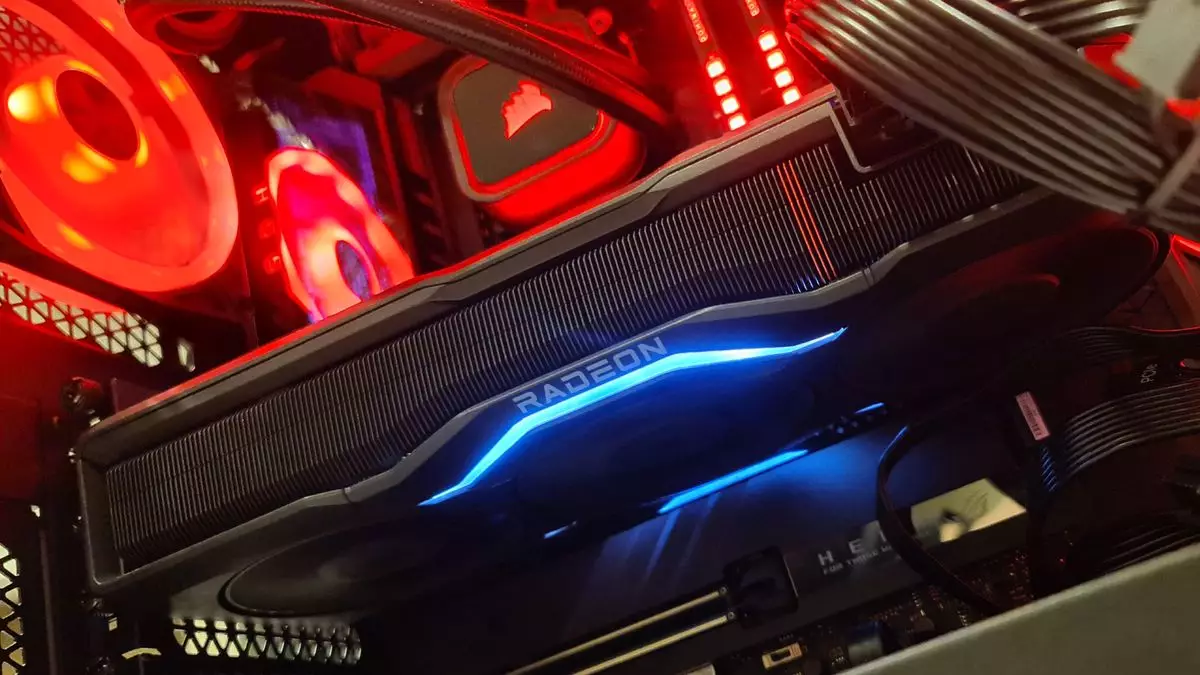As we stand on the verge of a new era in graphics technology, with Nvidia’s GeForce RTX 50-series and AMD’s RX 8000-series on the horizon, it’s crucial not to overlook the software advancements that accompany these powerful hardware upgrades. AMD’s recent release of the Adrenalin 24.9.1 driver provides a wealth of new features that deserve a deep dive. Anchored by the introduction of the second generation of AMD’s Fluid Motion Frames, AFMF 2, this update promises not just incremental changes but significant advancements in gaming performance. However, the effectiveness and implications of these changes warrant careful scrutiny.
The spotlight of the Adrenalin 24.9.1 update is undoubtedly on AFMF 2, which AMD claims can enhance gaming performance by a staggering 2.5 times. This ambitious assertion is not merely about boosting frame rates; it’s about refining the entire gaming experience. AFMF 2 operates as a driver-level frame generation technology, meaning it can be toggled on or off within the Adrenalin software. Unlike other technologies such as FSR (FidelityFX Super Resolution) or Nvidia’s DLSS (Deep Learning Super Sampling), AFMF does not necessitate game-specific optimizations, allowing for broader applicability across a variety of titles.
However, while the promise of 2.5 times higher frame rates is tantalizing, it’s essential to understand the context behind this figure. The results stem from benchmarks using a combination of HYPR-RX and FSR 2, not solely from AFMF 2 alone. This indicates that the new technology is often leveraged in conjunction with other AMD enhancements and optimizations. Therefore, readers should temper their expectations, recognizing that AFMF 2, while useful, may not single-handedly transform all gaming experiences.
So, what exactly sets AFMF 2 apart from its predecessor? AMD touts various improvements, including AI-optimized enhancements aimed at delivering superior quality, reduced latency, and more robust performance even on integrated graphics systems. The incorporation of features like Radeon Chill and compatibility with borderless fullscreen mode on 7000-series GPUs enhances its appeal, revealing a conscious effort by AMD to create a more inclusive and versatile gaming experience.
Despite these enhancements, initial testing indicate that AFMF 2 is unlikely to be the groundbreaking revelation some may hope for. Notably, testing of an earlier version suggested that while performance gains were noticeable, they were modest compared to expectations. Instead of revolutionizing gameplay, AFMF 2 may be more accurately regarded as a useful addition—one that fulfills a need for additional frame generation when FSR 3 is not available. This view encourages a more measured adoption narrative, emphasizing that while free frames are welcome, users should not expect miracles.
Beyond AFMF 2, the Adrenalin 24.9.1 driver introduces other features that improve both gaming and video playback experiences. A particularly interesting addition is Geometric Downscaling, designed to enhance video quality when played in smaller windows than the native resolution. This feature targets common visual artifacts and aliasing, creating a smoother viewing experience, which is particularly advantageous for those who utilize their devices for multimedia consumption as well as gaming.
Such comprehensive enhancements indicate AMD’s commitment to refining its driver software and improving the overall experience for users of Radeon graphics cards, especially with increasing numbers of gamers using portable devices or entry-level hardware.
AMD’s Adrenalin 24.9.1 and the introduction of AFMF 2 represent a significant yet measured step forward in the gaming software landscape. While the ambitious claims of performance boosts should be approached with skepticism, the incremental benefits of AFMF 2 cannot be overlooked. Players utilizing the latest Radeon GPUs are likely to find value in the improvements offered, especially for titles lacking access to FSR 3. As we transition into a new age of graphical performance, staying informed and understanding these advancements will be key for gamers aiming to maximize their experiences.
Whether you’re eagerly anticipating the latest hardware releases or simply looking to optimize your current setup, the forthcoming changes to AMD’s driver ecosystem signify an ongoing evolution—one that ultimately invites gamers to expect more while tempering their hopes with realism.

